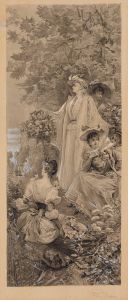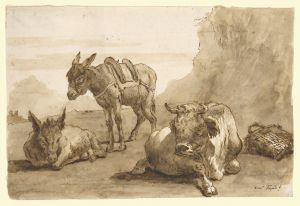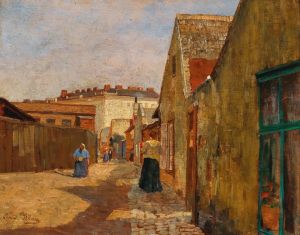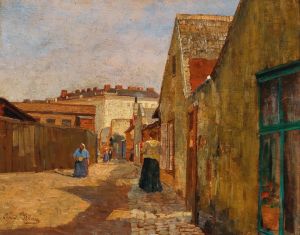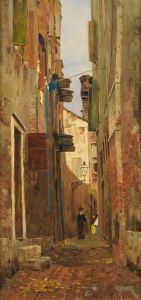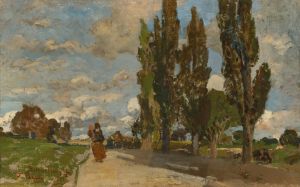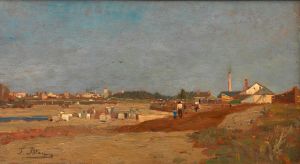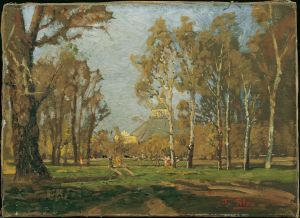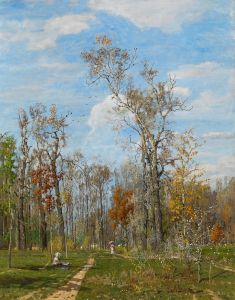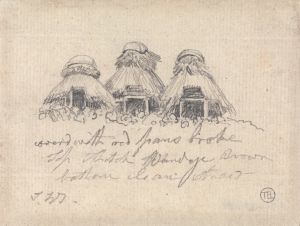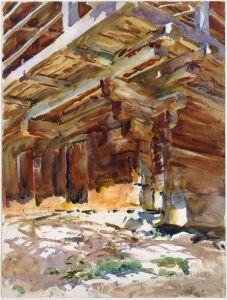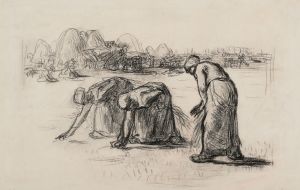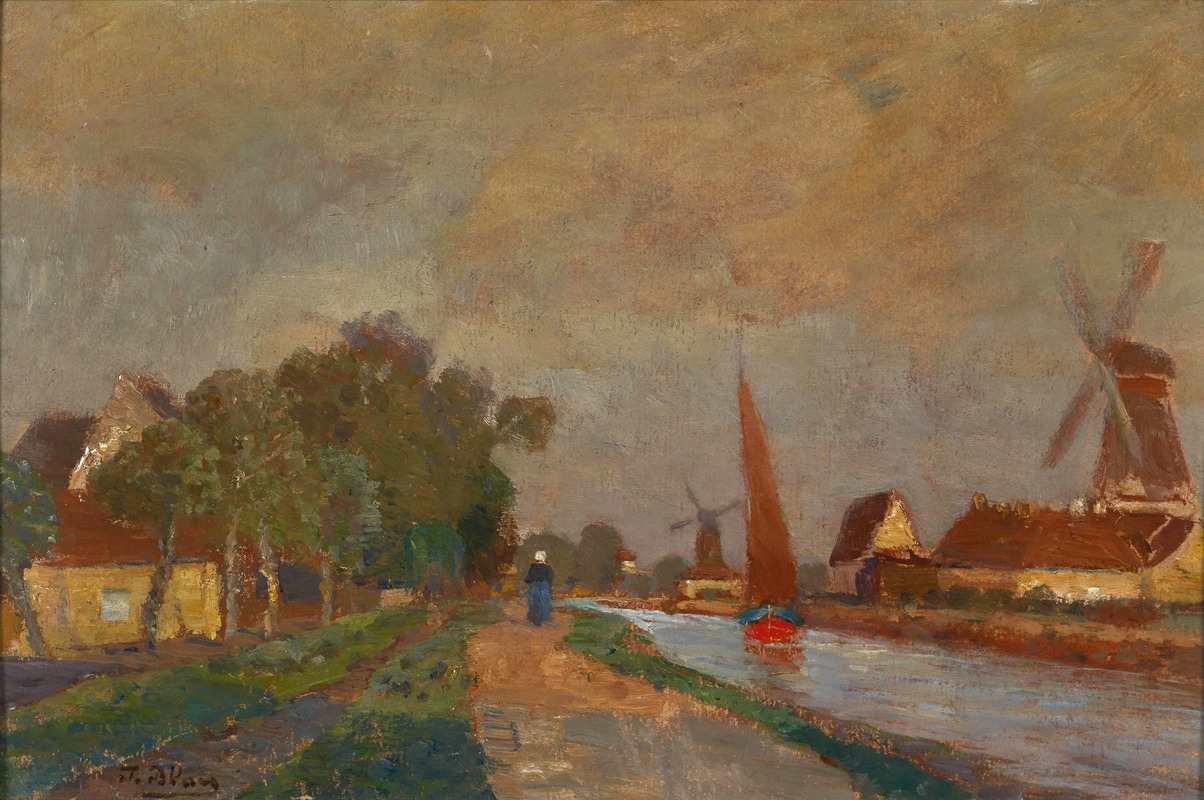
Motiv aus Franeker
A hand-painted replica of Tina Blau’s masterpiece Motiv aus Franeker, meticulously crafted by professional artists to capture the true essence of the original. Each piece is created with museum-quality canvas and rare mineral pigments, carefully painted by experienced artists with delicate brushstrokes and rich, layered colors to perfectly recreate the texture of the original artwork. Unlike machine-printed reproductions, this hand-painted version brings the painting to life, infused with the artist’s emotions and skill in every stroke. Whether for personal collection or home decoration, it instantly elevates the artistic atmosphere of any space.
Tina Blau, an Austrian landscape painter, is known for her vibrant and atmospheric depictions of nature. One of her notable works is "Motiv aus Franeker," which translates to "Scene from Franeker." This painting captures a scene from the Dutch town of Franeker, reflecting Blau's keen interest in capturing the essence of different locales during her travels.
Tina Blau was born on November 15, 1845, in Vienna, Austria. She was one of the few prominent female artists of her time, breaking through the male-dominated art world of the 19th century. Blau studied under several artists, including August Schaeffer and Emil Jakob Schindler, and was associated with the Austrian mood impressionism movement. Her style is characterized by a focus on light and color, often depicting serene landscapes and urban scenes with a lively palette.
"Motiv aus Franeker" is an example of Blau's ability to capture the unique atmosphere of a place. Although specific details about the painting's creation and its current location are not widely documented, it is known that Blau traveled extensively throughout Europe, drawing inspiration from various landscapes and cityscapes. Her travels to the Netherlands, including Franeker, provided her with a wealth of material for her work. The Dutch influence is evident in her use of light and her attention to the subtleties of the natural environment.
Blau's work often reflects a deep appreciation for the interplay between light and shadow, a hallmark of the impressionist movement. In "Motiv aus Franeker," she likely employed her signature technique of plein air painting, capturing the scene directly from nature to convey an authentic sense of place. This approach allowed her to depict the transient effects of light and weather, bringing a dynamic quality to her landscapes.
Tina Blau's contributions to art extend beyond her paintings. She was a pioneer for women in the arts, co-founding the Künstlerinnenverein (Association of Women Artists) in Vienna in 1885. This organization provided a platform for female artists to exhibit their work and gain recognition in a field that often marginalized their contributions. Blau's success and recognition in her lifetime were significant achievements, paving the way for future generations of women artists.
Despite the challenges she faced, Blau's work was well-received, and she exhibited widely, including at the prestigious Vienna Secession. Her paintings are held in various collections, including the Belvedere in Vienna and other European museums. "Motiv aus Franeker" stands as a testament to her skill in capturing the spirit of a place, showcasing her ability to blend technical precision with an emotive use of color and light.
In summary, Tina Blau's "Motiv aus Franeker" exemplifies her mastery of landscape painting and her ability to convey the essence of a location through her art. While specific details about this particular painting may be limited, it remains an important part of her oeuvre, reflecting her travels and her dedication to capturing the beauty of the natural world. Blau's legacy continues to inspire, highlighting her role as a trailblazer for women in the arts and her contributions to the development of impressionism in Austria.





